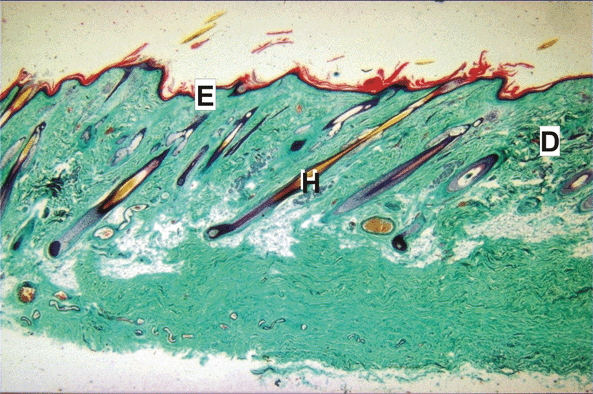LL2.H1.4 +D2 Skin Appendages: Hair Folicles
Skin Appendages: Hair Follicles:
- A hair follicle consists of a hair and its enclosing supportive sheaths
- Hairs are keratinised cellular structures which are derived from the epithelium of the epidermis
- Hairs have a supporting internal and external root sheath also derived from the epithelium of the epidermis
- External to the hair follicle the connective tissue of the dermis is thickened to form a sheath of connective tissue which helps to anchor the hair follicle in position
- At the base of the hair follicle is a dilation called the hair bulb, into which is invaginated the dermal papilla
- This is a projection of vascularised connective tissue which provides nutrition to the growing hair follicle
- Associated with the hair follicles are small muscles called arrector pili muscles
- These are attached to the base of the hair follicle and to the basement membrane of the epidermis
- When they contract, they cause the hair to stand erect
- Sebaceous glands are closely associated with hair follicles and empty their fatty secretion (sebum) into the hair follicle
- Hairs can be very fine, known as villous hair, such as are found on the abdomen
- Hairs can be thick and pigmented, known as terminal hair, as are found on the scalp
- Hairs are found all over the body except for the lips, palms, soles of the feet and parts of the external genitalia
- The hairs vary according to the region of the body and also according to the age, race and sex of the individual
- In many animals, but not in humans, hairs have an important role in thermoregulation
Micrograph of Hair Follicle:

A low power micrograph of the scalp showing several hair follicles (E=epidermis, D=dermis, H=hair follicle)
